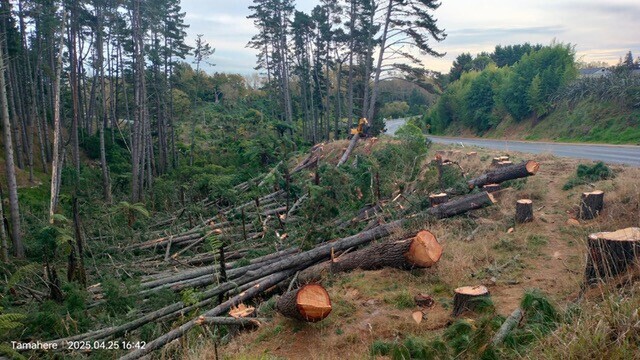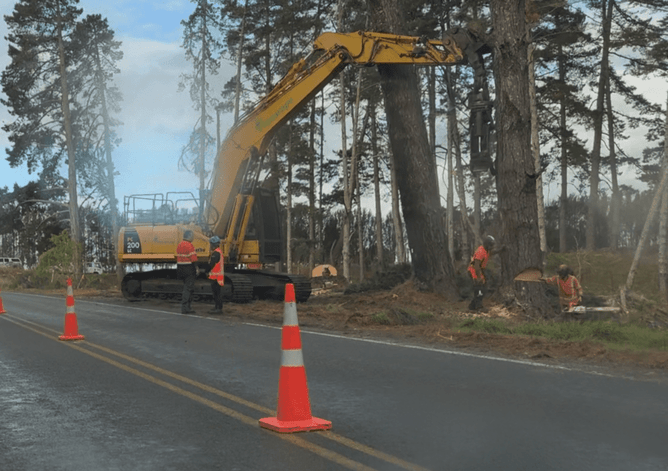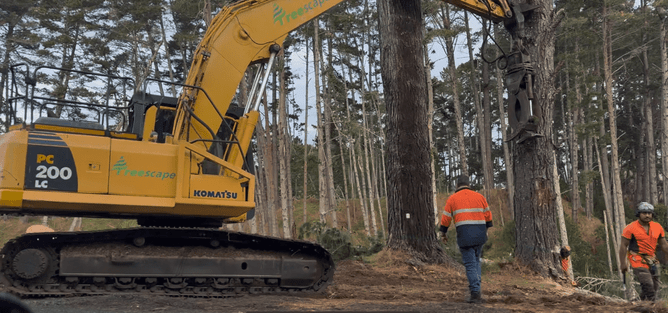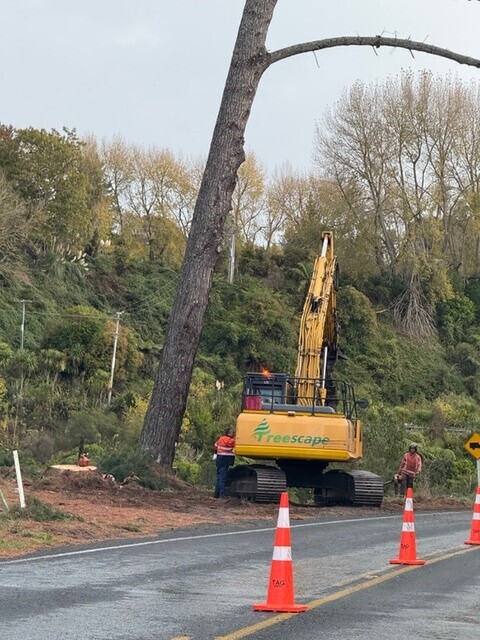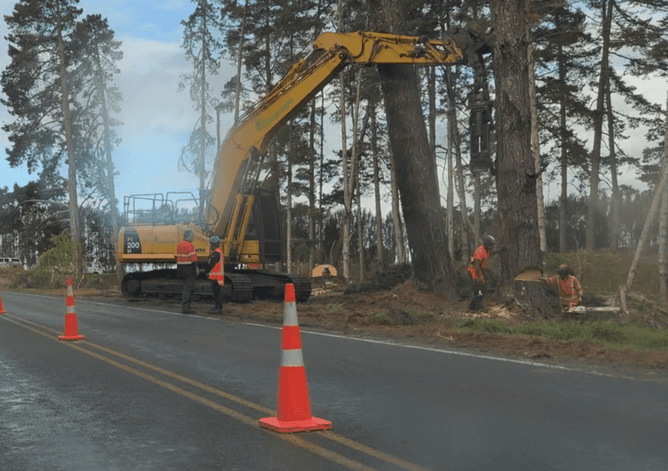Just days before a critical deadline, Waikato District Council has completed the removal of ageing and hazardous pine trees along the Tauwhare Road edge of the Tamahere Reserve, also known locally as Crawfords Quarry. The work, carried out ahead of the 30 April cut-off, comes as a direct response to mounting community safety concerns — and the swift action has been welcomed.
For months, the Tamahere Community Committee has urged Council to prioritise removal of the most dangerous trees, citing real risk to road users and reserve visitors alike. Many of the trees were not just towering but diseased and structurally compromised. A risk assessment was due for review before the end of April, and failure to meet that deadline could have handed the matter over to the Department of Conservation (DOC), where further consents would have been required — potentially delaying any action for months, or even years.
“We weren’t willing to wait and see,” said a spokesperson for the Tamahere Community Committee. “These trees were no longer just an eyesore; they were a public safety issue.”
While not all trees were removed, those deemed to be at risk — particularly along the roadside and reserve edge — have now been felled, stabilising the area and significantly reducing the hazard. The move is being seen as a proactive win for public safety, with many locals acknowledging the WDC’s timely response.
The trees, once part of a larger pine planting typical of earlier land use practices, were nearing the end of their life cycle. With disease setting in and increasing storm activity across the region, the risk of falling branches or entire trees toppling onto the road was no longer theoretical — it was imminent.
Their removal has also brought unexpected visual change. With the dense pine canopy now cleared in places, the reserve frontage along Tauwhare Road is more open and welcoming — providing better sightlines, sunlight, and a stronger sense of natural connection to the area.
Long maintained by dedicated volunteers, the reserve may now enter a new phase — one that honours its past while opening space for ecological renewal. Locals are already speculating about possible native planting, habitat restoration, or even new walking routes that make better use of the refreshed landscape.
For now, though, the biggest message is one of reassurance. The job is done, the danger has passed, and the community can breathe a little easier.
